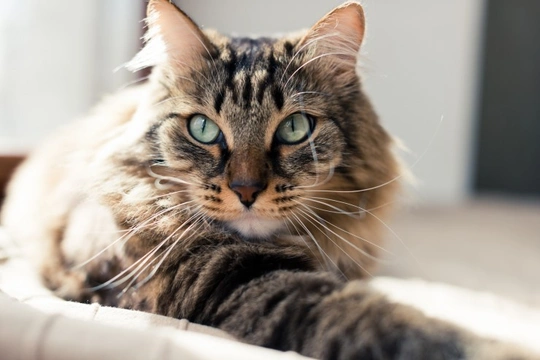
Has your moggy got a little bit of pedigree in there somewhere?
If you have a moggy rather than a pedigree cat with a known history, you have probably wondered at some point what makeup their background breeding is, and possibly, if they have a little pedigree ancestry in there somewhere, especially if they have certain specific features.
When it comes to dogs and their background, it is possible to submit a sample of their DNA for analysis, which can return to you a result listing telling you what breeds went into their formation, with varying degrees of accuracy-however, no equivalent service is currently available for cats, and so it can be much harder to find out with any reliability!
This means that if you suspect or wonder about your cat’s ancestry and if they have any specific breeding in them, the chances are that you will never be able to find out for sure unless you can trace their lineage back-but certain colours, patterns, shapes and traits may all help to give you a clue! This can be interesting and fun to look into, but because you can never know for sure whether or not your guesses are correct, is best viewed lightly rather than as the basis of any decisions on your cat’s care!
In this article, we will look at some of the various traits that may indicate that your cat has partial breeding from one or more pedigree breeds. Read on to find out!
What is a breed?
A lot of people have a range of common misconceptions about what makes up a breed-in its simplest terms, the word “breed” refers to a base of animals that share a significant enough number of uniformities in appearance and possibly temperament that they have been recognised as the same, and that are reflected in a large enough population of animals that the breed is viable in perpetuity without outcrossing, and able to maintain a healthy and sufficiently diverse population.
What does or does not constitute a breed is decided by the people in power at the top of national and international cat organisations-and while some breeds occur naturally and develop largely without human intervention, some breeds have been created-like the Tonkinese-from the crossing of other breeds, or selectively bred to exaggerate certain features beyond their natural norm-like the Persian.
Long hair
Cats are divided into two broad designations-long haired and short haired respectively. Cats that are longhaired can occur due to a mutation in any litter of shorthaired or mixed cats, but when it comes to breeds that naturally longhaired, they are likely to have ancestry that is not native to the UK. The Persian cat breed and its variants-including some breeds that were produced from Persian crosses-is the most pervasive long coated breed worldwide, and a significant number of cats that have long or semi-long hair likely have some Persian ancestry!
Tufted ears
All cats have a little bit of tufting in their ears, but if your cat’s ear tufts are really thick, prolific or long, it can be worth checking out some of the breeds that share this trait-such as the Maine Coon, Norwegian Forest cat, and LaPerm to see if they share any other traits with your own cat!
A particularly large build
If your cat is tipping the scales at north of 6kg or so, they might contain a little bit of one of the very large pedigree breeds, such as again the Maine Coon, Norwegian Forest, or others like the Ragdoll.
Large, pointed ears
A cat that has bat’s ears that are very triangular, pointed and large may have a little of one of the Oriental breeds in there somewhere-such as the Siamese or Havana. Once more, look at the big picture in terms of colour, build and size when making your deductions!
A pointed face
A pointed, exotic looking face with slanted eyes can be another indication of an Oriental breed like the Siamese, particularly if accompanied by a long, lean body and legs!
A very short tail
The Manx cat is well known as being the breed that is born without a tail-but not all Manx are tail-less, and in fact, various different tail lengths are acceptable within the breed, including some that are noticeably stumpy or much shorter than the norm! If your cat has a very short tail that was not caused by an accident or amputation, consider the Manx!
The colour
If you have suspicions about a certain breed but your own cat’s colour does not match up, this does not necessarily mean that you are wrong-the other side of your cat’s ancestry may account for differences in the colours your cat displays versus the breed norm. However, the colour of your cat can be used to reinforce your theories on breed if the colour is unusual or very specific to certain breeds-like colour points, or certain spot patterns as shown by the Bengal cat.
A distinctive voice
Finally, some breeds of cat have a very distinctive meow that they are not afraid of using-like the Siamese and the Bengal! If your cat is very vocal and has a meow almost like a baby’s cry, they probably didn’t pick that up from the neighbourhood Tomcat, but likely a more exotic ancestor!



